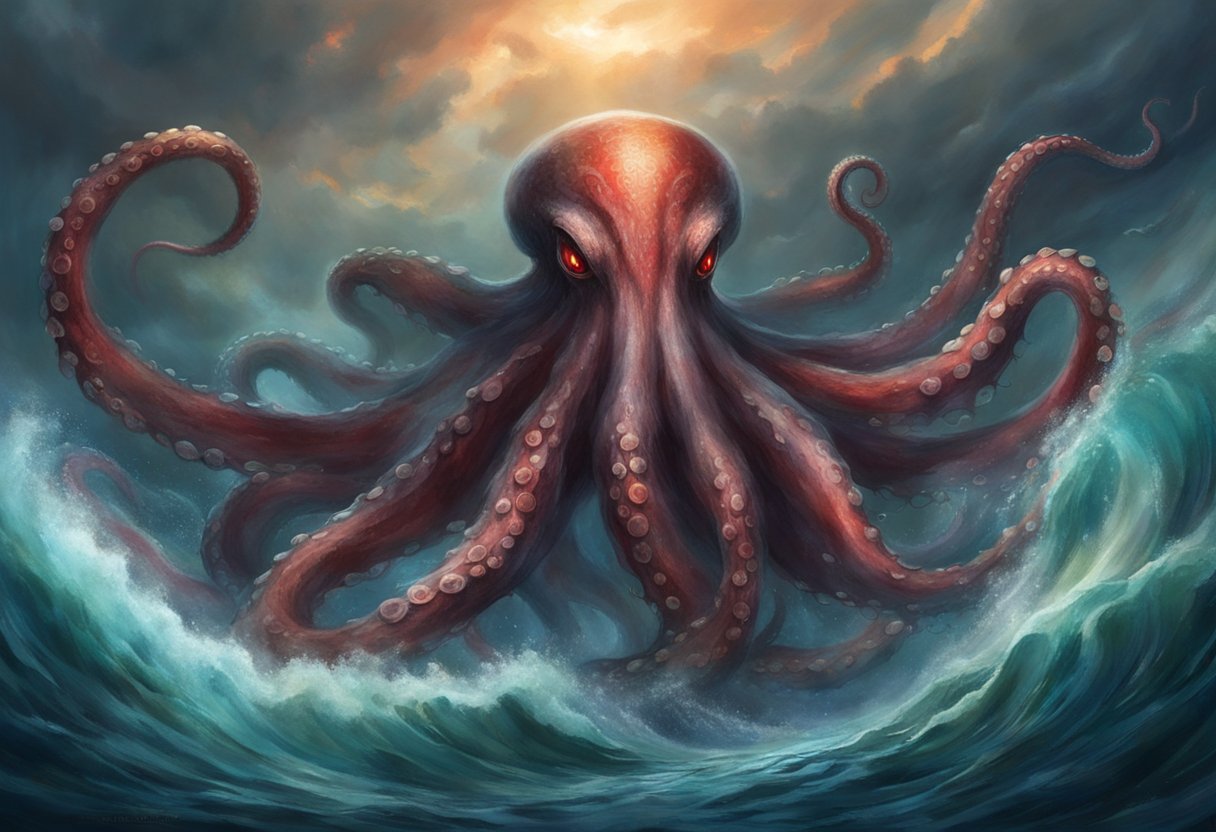
when Horror Yearbook – Akkorokamui is one of Japan’s most terrifying and lesser-known sea legends. Said to resemble a giant octopus stretching over 100 feet long, this mythical creature haunts the coastal waters around Hokkaido. Locals believe that it can capsize boats, pull entire crews underwater, and vanish into the depths without a trace.
Unlike other sea monsters rooted in fiction, stories of Akkorokamui have appeared in ancient folklore and are still whispered today by fishermen who swear they’ve seen something massive moving beneath the waves. The creature is thought to have healing powers as well, adding an eerie layer of complexity to its legend. Whether viewed as a menace or a marvel, Akkorokamui continues to stir fear and fascination. People now travel to the shores of Japan not just for the beauty but to catch a glimpse of this elusive giant. Its legend survives not only through oral history but through cultural reverence.
The story of Akkorokamui can be traced back to the Ainu people, Japan’s indigenous population. Their folklore tells of a red octopus god who once destroyed a town in a fit of rage. After wreaking havoc, it was said to have escaped into the sea, becoming what we now know as Akkorokamui. Some believe the creature was once a powerful spirit wronged by humans and transformed into a monstrous being. Others claim it was born from nature’s wrath. These ancient tales passed through generations have cemented Akkorokamui’s place in Japan’s mythological landscape. In the coastal towns of Hokkaido, shrines and offerings still exist to appease this beast and ensure safe passage for fishermen. Akkorokamui legends often include dramatic encounters involving sudden storms or unexplained disappearances at sea. People living near its supposed habitat still speak of strange vibrations in the water and shadows that don’t match any known marine creature.
“Read about: Sun Wukong’s Rebellion Against Heaven Will Leave You Speechless”
Despite being a creature of myth, modern-day reports of Akkorokamui continue to surface. Some sailors and divers claim to have seen massive red tentacles in the deep. Others report hearing unnatural sounds or feeling a powerful presence while navigating the coastlines of Hokkaido. With the rise of underwater drones and oceanic exploration, more eyes are searching for proof than ever before. Tourists now visit Akkorokamui hotspots hoping for a glimpse or a chilling experience. Social media has fueled interest, with photos of giant shadows under the sea going viral. Though most of these remain unverified, they keep the legend alive and thriving. Scientists have even speculated whether certain sightings may relate to unknown or oversized species of octopus. The obsession is no longer limited to local lore but has reached a global audience. Akkorokamui has transcended myth to become a cultural icon for mystery lovers and cryptid hunters alike.
Akkorokamui has begun to leave its mark on pop culture. While it may not be as globally recognized as Godzilla or the Kraken, its influence can be seen in anime, literature, and even video games. Japanese horror and mythology-based stories often draw inspiration from Akkorokamui’s terrifying presence. Creators reimagine it as either a destructive force or a misunderstood guardian of the sea. Art pieces and merchandise now feature this red sea monster in various forms, from traditional ink illustrations to modern digital designs. In Japan, coastal festivals sometimes include tributes to sea deities believed to represent or honor Akkorokamui. The creature’s legacy also encourages discussion around respect for nature and ancient traditions. As interest grows, documentaries and indie films are beginning to explore its origins and cultural significance. Akkorokamui’s evolution from regional legend to symbolic figure shows how mythology continues to shape modern imagination and identity.
“Read more: The Ultimate Family Vacation Guide: Stress-Free, Kid-Approved!”
What makes Akkorokamui so enduring is the combination of mystery, fear, and possibility. No concrete evidence confirms its existence, yet its legend refuses to fade. Skeptics argue that sightings can be explained by natural marine phenomena, while believers point to centuries of consistent storytelling. Researchers and mythologists continue to study its folklore to better understand its grip on the imagination. Coastal communities still honor it with caution and curiosity. Unlike fabricated monsters, Akkorokamui’s tale feels grounded in cultural memory. Whether it is real or symbolic, the creature represents the unknown forces of the deep ocean. As long as the seas remain largely unexplored, myths like Akkorokamui will persist. Its story invites both scientific curiosity and spiritual awe. In a world filled with satellite maps and deep-sea sonar, one ancient sea monster still swims freely through stories, reminding us that some legends can never truly be drowned.